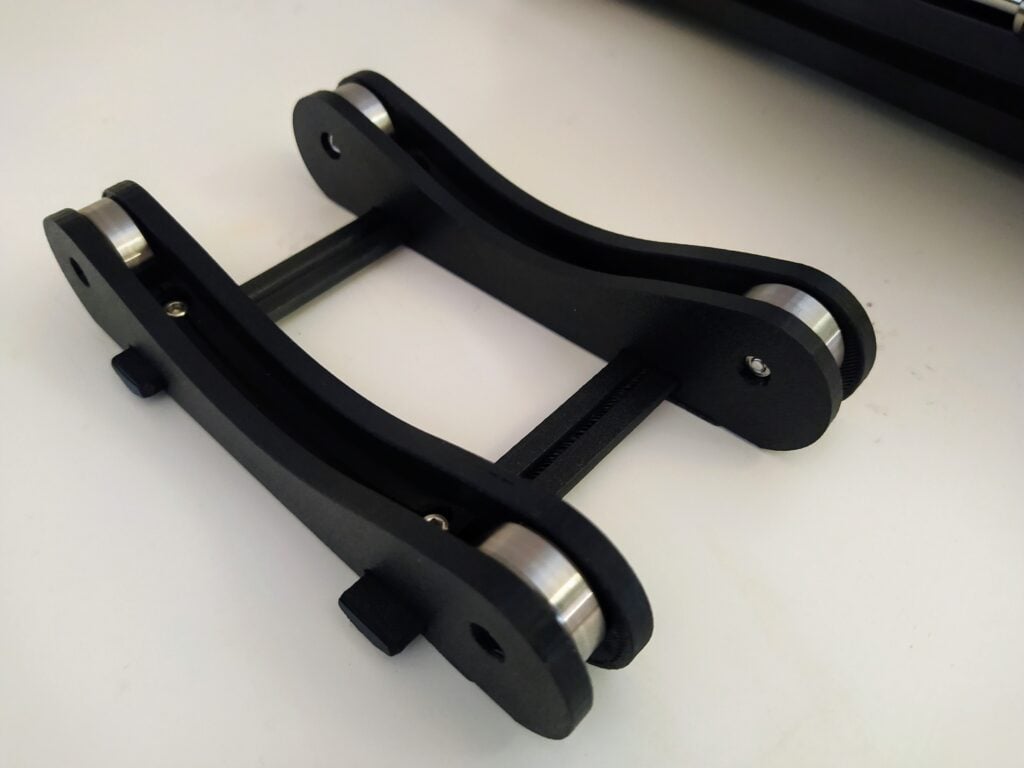
Prusa 3D printers are both extremely well-known and well regarded in the 3D community. The Prusa i3 design is an absolute classic open-source design that led to many clones and versions based on it. For many though, the flagship Prusa i3 is perhaps at a price point that makes it less likely to be a choice for a first printer, and therefore, many will go with a more budget option. Many of these machines are extremely capable, but are perhaps are less refined than the Prusa, requiring more work to set up and calibrate, and often requiring modification to get good results.
The Prusa MINI+, at £375 (semi-assembled version), sits in the middle of these two tiers. It’s a lot more affordable than the larger Prusa i3 but, as we’ll see in this review, lacks none of the refinement of its larger counterparts. In fact, in some ways, the Prusa MINI+ exceeds its larger Prusa sibling. We wanted to take a look at this mid-priced home 3D printer.

You can tell from the packaging that a Prusa product has been well thought about, and the MINI+ makes no exceptions to this rule, arriving in excellent packaging. It’s available in two formats; the kit version which is slightly cheaper but you need to assemble every component, or the semi-assembled option that only has a very small amount of building to be done to complete the unit. We went for the latter and, opening the box, you see that the MINI+ is in two parts; the base which has the Y axis and heat bed, and the X and Z axis assembly which has the control box attached.
There are numerous accessories included, such as tools, lubricants, a USB drive, and a filament reel holder, and we opted for the package that included both the filament sensor unit and the smooth and the textured build plates. The other item of note is the instruction manual which is double-sided, with one side being the assembly and calibration instructions, and the other side being a book with general approaches to 3D printing.

The assembly of the Prusa MINI+ is a pretty short list of tasks. It consists of adding foam feet to the base, removing the control box lid, attaching the XZ gantry to the base using three supplied bolts, adding the LCD and the filament sensor, and connecting a few well-marked cables. We’ve actually assembled two of these units now – the first one we very carefully took our time over, and it took around an hour, and the second probably closer to 35 minutes.
The Prusa MINI+ has a build area of 180 mm cubed, which is actually comparable to many larger machines but is smaller than Prusa’s i3 offerings. Hardware-wise, it has Prusa’s new ‘Buddy’ motherboard which sports a 32-bit processor and TMC2209 stepper motor drivers running Prusa’s own custom firmware. The LCD is colour and the interface is incredibly well laid out. The MINI+ uses a USB pen drive instead of an SD card and, when you insert the USB drive with a new model on it, the LCD renders a 3D image of the new file and, in one click, you can set the file to print. Before each print starts, the MINI+ is fitted with the excellent SuperPINDA probe technology which automatically does a multipoint probe of the build area to ensure consistency in printing the first layer.

After assembly at first boot, the machine automatically takes you through some calibration tests. It moves the axes to their limits and tests the nozzle and heated bed. It then jumps to suggesting you load some filament and perform the Z height/first layer calibration. Just to reiterate, you don’t need to read up on how these work – all the information and instructions are delivered to you on the LCD screen in simple terms. The Z axis calibration consists of the nozzle printing a small test pattern, while you use the input dial to move the Z axis up and down in tiny increments until the test print is stuck to the build area and you are extruding a just-right first layer. For both the machines we’ve assembled, we needed to run this job twice, with the first pass getting it close and the second pass getting it perfect. The MINI+ also comes with a small amount of Prusament PLA filament to get you started.

One of the great things about having a Prusa is that you are not only buying a machine that has had a huge amount of research and development, but you also get access to the Prusa community. This community is useful for questions, but it’s also this community that has brought a lot of data back into Prusa products. A good example of this is using the recommended PrusaSlicer. Of course, the Prusa Slic3r software has built-in support for the MINI+, but it also has printing profiles for a huge range of filaments. Using Prusament PLA or PETG is going to yield great results, but there are many filaments from all manufacturers included, as well as generic profiles for budget no-brand filaments. In use, we have found most filaments work extremely well, but we have only experimented with PLA and PETG so far, but have used a range of Prusa and non-Prusa filaments – all with great results. If, like us, some of your other 3D printers are older and cheaper machines, you will be amazed at how quiet the Prusa MINI+ is – it’s certainly usable in small accommodation without disturbing others.
Verdict
10/10
This is an excellent mid-price printer, a great first choice of printer if it’s in budget, and a workhorse machine for veteran printers.





